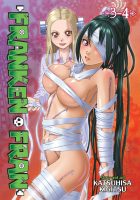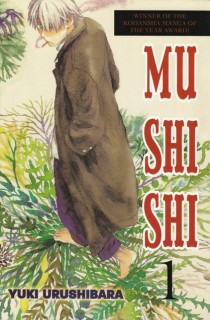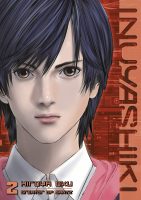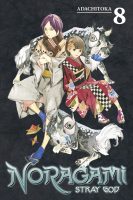My News and Reviews
Other than the regular My Week in Manga feature, there were no posts from me last week at Experiments in Manga. I was, however, able to make some progress on my review for the final volume of Setona Mizushiro’s manga series After School Nightmare. I hope to finish and post the review in the very near future, and then officially wrap up my horror manga review project.
Elsewhere online last week, I came across two interesting interviews: a translation of a 2006 conversation between Taiyo Matsumoto and Fumiko Takano as well as an interview with Kazue Kato, creator of Blue Exorcist, from Anime Expo 2016. The San Diego Comic Con took place over the weekend and there were a few licensing announcements to come out of the event: Kodansha Comics is planning a deluxe edition of Masamune Shirow’s Ghost in the Shell; Udon Entertainment has acquired Yuztan’s Dragon Crown manga adaptation in addition to more artbooks, Manga Classics, and a Street Fighter novel; and Viz Media will be releasing a Princess Mononoke artbook as well books based on RWBY.
Finally, in part due to a suggestion made by a regular reader of Experiments in Manga, I’d like to start more regularly mentioning some of the crowdfunding projects that I’m either supporting or that have caught my eye. In the past, I’ve tended to only mention projects that were directly or tangentially related to manga in some way, but I’d like to begin highlighting other campaigns as well. And so! Natasha Alterici is raising funds for the second volume of Heathen, a beautifully illustrated comic about lesbian Vikings. Jason Thompson, author of Manga: The Complete Guide and a comic creator in his own right, is printing a poster map of alien invaders. Bones of the Coast is an anthology of horror comics inspired by the Pacific Northwest.
I’d also like to take this opportunity to give the Sparkler Monthly Year 4 campaign another shout out. (If you follow me on Twitter, that’s pretty much all I’ve been doing for the last week or so, and will probably continue to do so for a while.) I really love everything that Sparkler Monthly/Chromatic Press is doing, and will be legitimately heartbroken if the Kickstarter doesn’t succeed.
Quick Takes
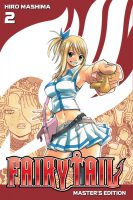 Fairy Tail, Omnibus 2 (equivalent to Volumes 6-10) by Hiro Mashima. When I first started reading Fairy Tail, I ended up jumping into the series around the twenty-fifth volume. Fairy Tail has a huge following, but it just didn’t seem to click with me. However, now that I’ve read some of earlier volumes, I think I finally more fully understand the appeal of the series. Fairy Tail is a fun and exciting manga with likeable characters and an emphasis on friendship and found family. One of my complaints about Fairy Tail in the past has been that it often seems directionless. Even this early in the series Mashima readily admits to making things up as the he goes with no concrete plan in place. He even seemed surprised when he realized that the series would reach ten volumes. (And it’s now over fifty and still ongoing.) Interestingly, this lack of direction didn’t seem to bother me as much as it has before, I think in part due to the fact that Mashima spends a fair amount of second omnibus exploring the main characters’ back stories which provided the needed amount of focus. I liked getting to know the characters better, something I missed out on by starting with a later story arc. Also, Kodansha’s massive, oversized “Master’s Edition” omnibuses show off Mashima’s artwork and are a great way to catch up on the series.
Fairy Tail, Omnibus 2 (equivalent to Volumes 6-10) by Hiro Mashima. When I first started reading Fairy Tail, I ended up jumping into the series around the twenty-fifth volume. Fairy Tail has a huge following, but it just didn’t seem to click with me. However, now that I’ve read some of earlier volumes, I think I finally more fully understand the appeal of the series. Fairy Tail is a fun and exciting manga with likeable characters and an emphasis on friendship and found family. One of my complaints about Fairy Tail in the past has been that it often seems directionless. Even this early in the series Mashima readily admits to making things up as the he goes with no concrete plan in place. He even seemed surprised when he realized that the series would reach ten volumes. (And it’s now over fifty and still ongoing.) Interestingly, this lack of direction didn’t seem to bother me as much as it has before, I think in part due to the fact that Mashima spends a fair amount of second omnibus exploring the main characters’ back stories which provided the needed amount of focus. I liked getting to know the characters better, something I missed out on by starting with a later story arc. Also, Kodansha’s massive, oversized “Master’s Edition” omnibuses show off Mashima’s artwork and are a great way to catch up on the series.
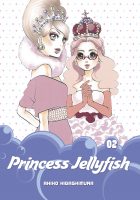 Princess Jellyfish, Omnibus 2 (equivalent to Volumes 3-4) by Akiko Higashimura. I am still incredibly happy that Kodansha Comics is releasing a print edition of Princess Jellyfish. I’m also glad that the series seems to be worth the risk and is doing fairly well for the publisher so far. I am especially looking forward to reaching the parts of the story that weren’t included in the anime adaptation. While there are some differences, for the most part the second omnibus fall entirely into what was adapted for the anime. Because of that I’m not at all surprised by any of the plot developments, but I still am thoroughly enjoying the story and characters. I also get a kick out of the visual nods to classic shoujo manga that Higashimura scatters throughout the series, usually when something particularly dramatic is going on. Princess Jellyfish is probably first and foremost a comedy, but through its humor it explores issues of gender roles and expectations. There is a fair amount of relationship drama, too. At this point in the series, Kuranosuke is trying to come up with a plan to raise the funds needed to save the Amamizukan apartments from being demolished and in doing so becomes more and more attached to Tsukimi. As for Tsukimi, she’s dealing with her own personal and romantic turmoils.
Princess Jellyfish, Omnibus 2 (equivalent to Volumes 3-4) by Akiko Higashimura. I am still incredibly happy that Kodansha Comics is releasing a print edition of Princess Jellyfish. I’m also glad that the series seems to be worth the risk and is doing fairly well for the publisher so far. I am especially looking forward to reaching the parts of the story that weren’t included in the anime adaptation. While there are some differences, for the most part the second omnibus fall entirely into what was adapted for the anime. Because of that I’m not at all surprised by any of the plot developments, but I still am thoroughly enjoying the story and characters. I also get a kick out of the visual nods to classic shoujo manga that Higashimura scatters throughout the series, usually when something particularly dramatic is going on. Princess Jellyfish is probably first and foremost a comedy, but through its humor it explores issues of gender roles and expectations. There is a fair amount of relationship drama, too. At this point in the series, Kuranosuke is trying to come up with a plan to raise the funds needed to save the Amamizukan apartments from being demolished and in doing so becomes more and more attached to Tsukimi. As for Tsukimi, she’s dealing with her own personal and romantic turmoils.
 A Silent Voice, Volume 7 by Yoshitoki Oima. The first volume of A Silent Voice left a huge impression on me, and the series as a whole has consistently been one of the strongest stories that I’ve recently read. Granted, A Silent Voice isn’t always an easy read and the subject matter can be pretty heavy. Bullying, depression, social anxiety, suicide attempts, and other tough issues all come into play. Oima isn’t afraid to let the relationships between the characters be extremely messy and complicated. I especially appreciate that Oima doesn’t just slap romance on the situation like magical bandage that will fix everything or erase the misdeeds of the past. From time to time, I was a little worried that might happen, but A Silent Voice takes a more nuanced and much less stereotypical route with the story. If anything, the romantic feelings just complicate matters further. The characters themselves are realistically and believably flawed people. Frankly, they can even be unlikeable, they still remain interesting and compelling. Many of them are struggling with mistakes that they have made and are dealing with devastating regret. But by the end of the series, the characters able to begin to look forward towards the future instead of wallowing in what can’t be changed; their pasts have shaped who they are, but won’t be the only thing that defines them.
A Silent Voice, Volume 7 by Yoshitoki Oima. The first volume of A Silent Voice left a huge impression on me, and the series as a whole has consistently been one of the strongest stories that I’ve recently read. Granted, A Silent Voice isn’t always an easy read and the subject matter can be pretty heavy. Bullying, depression, social anxiety, suicide attempts, and other tough issues all come into play. Oima isn’t afraid to let the relationships between the characters be extremely messy and complicated. I especially appreciate that Oima doesn’t just slap romance on the situation like magical bandage that will fix everything or erase the misdeeds of the past. From time to time, I was a little worried that might happen, but A Silent Voice takes a more nuanced and much less stereotypical route with the story. If anything, the romantic feelings just complicate matters further. The characters themselves are realistically and believably flawed people. Frankly, they can even be unlikeable, they still remain interesting and compelling. Many of them are struggling with mistakes that they have made and are dealing with devastating regret. But by the end of the series, the characters able to begin to look forward towards the future instead of wallowing in what can’t be changed; their pasts have shaped who they are, but won’t be the only thing that defines them.

